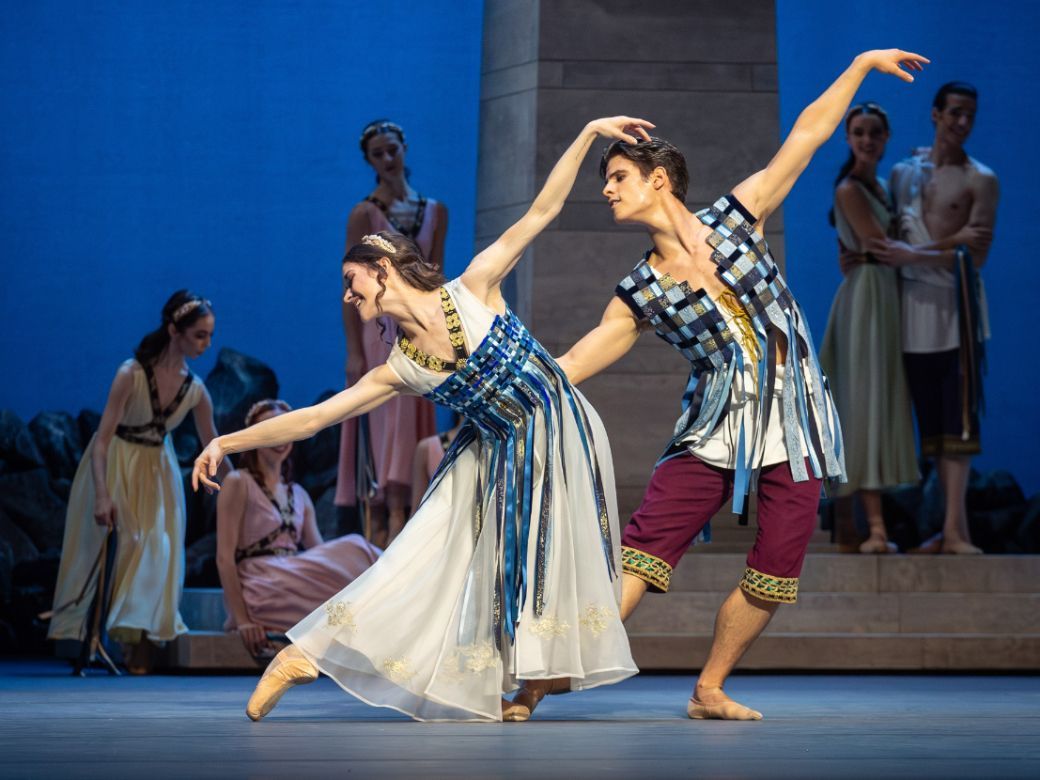Alessandra Ferri has signalled her clear intent in Vienna. Her first new production since taking over as Artistic Director of the Wiener Staatsballett this season is a full-length narrative ballet by no less a choreographer than Alexei Ratmansky. Of Love and Rage was premiered by American Ballet Theatre in 2020 and receives its European premiere here under the revised title Callirhoe.

When he was a dancer at the Bolshoi, Ratmansky was known affectionately as “the boy from Kyiv”. (It’s a different story now, his ballets still performed but his name wiped from the playbill.) But he was weaned on heroic Soviet ballets such as Spartacus and it’s another Khachaturian ballet, Gayane, whose score he has raided for Callirhoe, stitched together by Philip Feeney. Reflecting Ratmansky’s love of Greco-Roman art, the libretto is based on a novel by Chariton of Aphrodisias, one of the earliest prose novels to have survived from antiquity. Callirhoe is the most beautiful woman in the world, compared favourably to goddess Aphrodite, whose statue looms large over much of the action in Jean-Marc Puissant’s set.
You’d be well advised to study the synopsis beforehand because the action hurtles along at an alarming pace. Think of Act 1 as Romeo and Juliet with pirates. Callirhoe and Chaereas, the children of feuding noble families in Syracuse, fall in love and marry – here with grudging parental approval – but jealous rivals deceive Chaereas into thinking that Callirhoe has been unfaithful (thanks to replica wedding bracelets). He confronts her – this happens off-stage à la Greek tragedy – and she collapses, presumed dead.
In her tomb, she awakens only to be abducted by looting pirates, who whisk her off to Miletus, where the nobleman Dionysius laments the death of his wife. The pirates sell Callirhoe to Dionysius, who falls in love with her. For the sake of her unborn child, Callirhoe agrees to marry him. Chaereas gatecrashes the wedding and gets himself arrested.
Cue a breathless Act 2, where every ruler falls for Callirhoe. Mithridates and the King of Babylon both try to prize her from Dionysius, but the matching bracelets of Callirhoe and Chaereas prove they are married. War between the Babylonians and the Egyptians finds Dionysius and Chaereas leading opposing forces. Chaereas triumphs and is reunited with Callirhoe, who forgives him.
Using traditional mime gestures, Ratmansky’s admirable storytelling makes all of this clear and the action is propelled forward. Male dancers strike poses in athletic freezes – think Myron’s discus thrower – and female dancers visit the tomb in single file, like figures on Grecian pottery.
In a nod to Soviet ballets like Spartacus, there is a lot of thrust, energy and leaping diagonals: Egyptians and Babylonians in battle formations squaring off to the famous Sabre Dance; muscular jumps and turns for the six Babylonian guards to the Mountaineers’ Dance in front of the Gates of Ishtar; and the infectious rhythms of the Lezginka for the Act 1 wedding celebrations, featuring hints of traditional Greek folk dance. All come off thrillingly, especially with the State Opera Orchestra – essentially the Vienna Philharmonic – letting its collective hair down to Khachaturian’s gaudy music, driven on by conductor Paul Connelly.
Yet much of the choreography is tender, featuring pliant pas de deux, particularly in the duet where Dionysius partners the reluctant Callirhoe to the slow movement from Khachaturian’s Piano Concerto, with its eerie flexatone interjections. And although there is the occasional spectacular torch lift, many of these pas de deux eschew bravado moments.
At the season launch last spring, Ferri talked about her desire to raise standards in the company and, significantly, the leads in both opening casts were taken by newly appointed principals. Cassandra Trenary, who left ABT at the end of last season, danced with outstanding poise, soft footwork and lyrical arms as an expressive Callirhoe. Portuguese dancer António Casalinho, who has joined from the Bayerisches Staatsballett, had plenty of boyish charm as Chaereas. There were one or two slips in hold betraying signs of their new partnership. Casalinho saved his fireworks for the battle scene, exploding into manège turns and quickfire spins at lightning speed.
Dionysius was given a highly sympathetic portrayal by Davide Dato, dignified and partnering Trenary with great sensitivity. Alessandro Cavallo, a new demi-soloist, and Eno Peci dispatched the Mithridates and King of Babylon caricatures with lusty relish, while Ketevan Papava’s slinky stretches made much of the Queen’s brief role. The corps de ballet was not always perfectly tidy, but they threw themselves into Ratmansky’s energetic choreography with spirit. With such a terrific import, Ferri has already made her mark.


